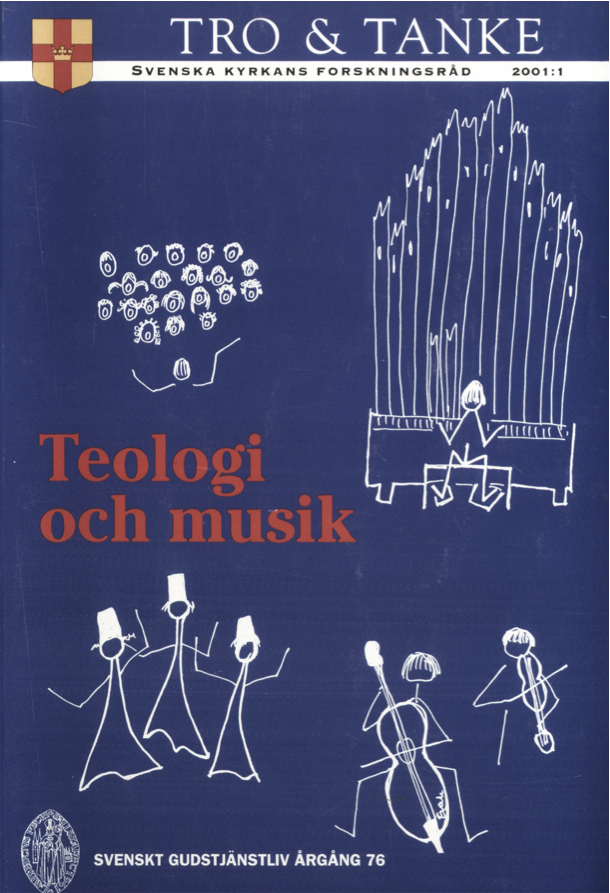Musik og teologi - hvad har de med hinanden at göre? Om baggrunden for initiativet Forum Musik'Teologi i Danmark
Abstract
The divine service communicates with signs-—and symbols in particular. The vertical communication from God to human beings gives rise to the horizontal one from person to person in the language school of the service.
Service communication is characterized by the sending and receiving of signs. Priest and church musicians must together choose the communicative signs and assess their effect in the continuing liturgic understanding of the congregation.
In 1996 Forum Musik-Teologi was formed in Denmark for discussions between priests and church musicians. The discussions were to have their star ting-point in an overall conception of the preaching of the Word in all aspects, also musical ones. The first meeting in April 1997 bore the heading “Music, Theology and Culture— W hat Do They Have in Common?”. The following annual meetings have had these themes: “The Language of the Church”, “The Place of the Church Choir in the Service”, “Can Time Be Heard?”, and ”Art in Church/The Musical Action of the Year 2000 Fund”.
Four working parties form part of the activity in the Forum:
l. On the different qualities of hymn melodies—musically and theologically.
2. The divine service in musical shape.
3. Biblical poetry and prose in musical settings to be used in divine service.
4. Art and church.
The author links to the above reflections on the concept of time and divine service, reflections on the congregation’s mutual praise as a sign of the reception of the gift of faith, reflections on the interplay between text and music in hymns, reflections on the need of liturgic pedagogics, and reflections on divine service as a cultural phenomenon and as a game.
The co-operation between music and theology does not aim at the aestheticizing of the forms of the divine service but at making service multilingual: communication in divine service on the horizontal person-to-person area shall use as many sign languages as possible within the frames set by historical continuity and pedagogical efficiency.
Downloads
Publicerad
Nummer
Sektion
Licens
© författarna, Laurentius Petri Sällskapet för svenskt gudstjänstliv samt Artos & Norma bokförlag. Det är tillåtet att kopiera och använda material ur Svenskt Gudstjänstliv för forskningsändamål om källan anges. För övriga ändamål kontakta respektive artikelförfattare samt förlaget. Särskilda restriktioner kan gälla för bildmaterial.


